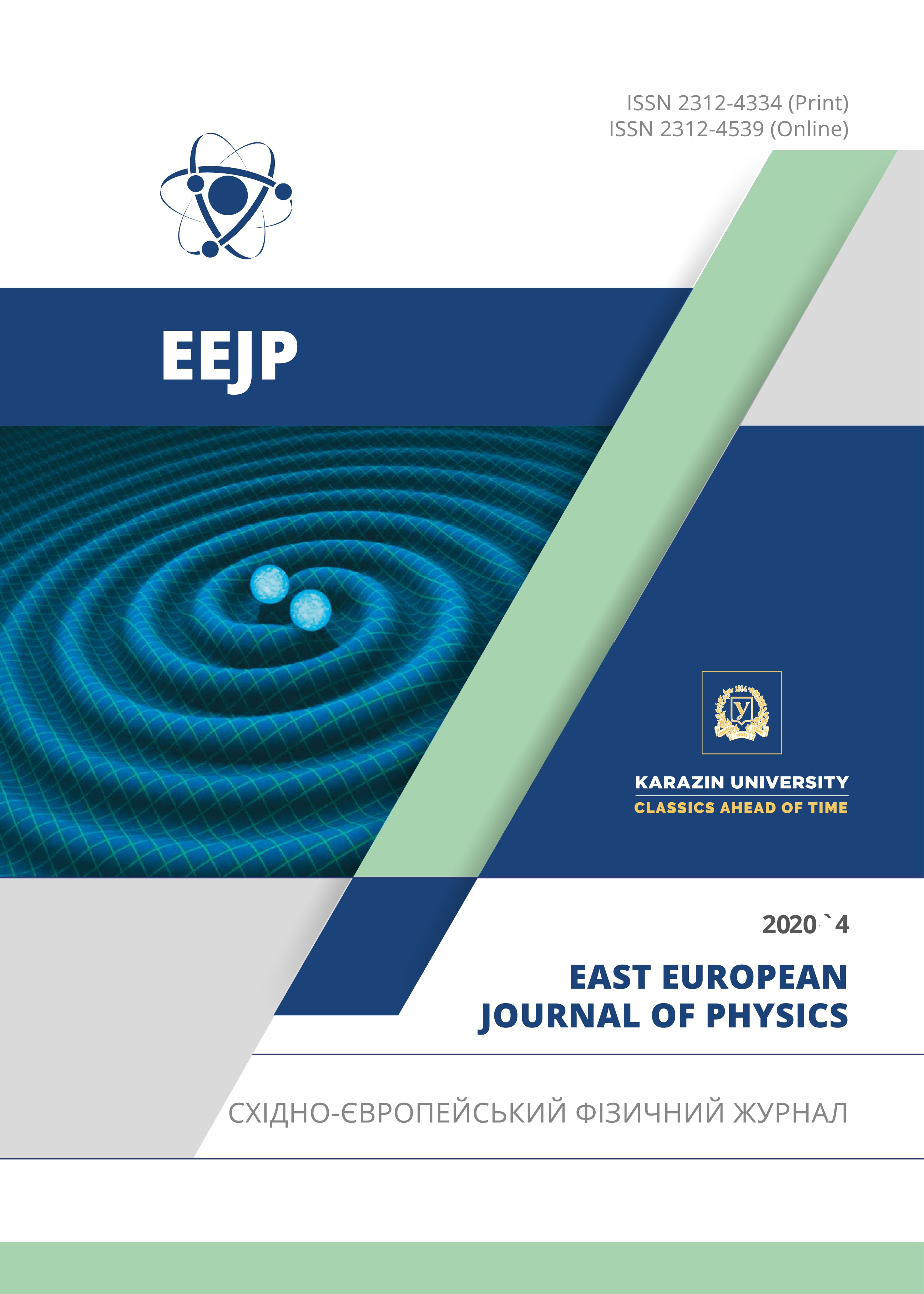Research and Selection of Prospective Materials for Activation Dosimetry of Intense Bremsstrahlung Radiation
Abstract
Radiation technologies based on the use of powerful electron beams and gamma radiation are closely related to the need for dosimetry of these beams. Dosimetry based on the use of the inelastic gamma-ray scattering reaction on a number of nuclei with the formation of isomers with different half-lives and energies of radiation quanta is very successful for these purposes. An example of this application in dosimetry is the 115In (γ,γ')115mIn reaction, which results in the formation of the 115mIn isomer, having a gamma line with an energy of 336.24 keV and a half-life of 4.5 hours. There was a successful application of this technique in dosimetry in solving certain practical problems (irradiation complexes based on 60Co source- cobalt “guns”). In this work, it is shown that the use of In detectors for dosimetry of gamma-radiation with a wide energy spectrum (bremsstrahlung) is associated with significant uncertainty in measuring the equivalent dose of the gamma spectrum with an upper limit of 10 MeV. This uncertainty is due to the relatively high threshold of the aforementioned reaction of 1.08 MeV. The quantitative contribution to the total radiation flux of the region of the gamma spectrum below the threshold (γ,γ') of the reaction on the In nucleus was determined and it was shown that, depending on the direction of radiation, there is an systematic error in measuring the equivalent dose, reaching 20-60%. Investigated and proposed for use alternative materials detectors, allowing reducing the systematic error in measuring the equivalent dose to 2-3%, which is quite acceptable for practical use.
Downloads
References
Jiunn-Hsing Chao, Pin-Chieh Hsu, and Hong-Ming Liu, Applied Radiation and Isotopes, 55, 549-556 (2001), https://doi.org/10.1016/S0969-8043(01)00076-8.
A. Murataka, S. Endo, Y. Kojima, and K. Shizuma, J. Radiat. Res. 51(2), 197-203 (2010), https://doi.org/10.1269/jrr.09083.
V.I. Nikiforov, A.Eh. Tenishev, A.V. Torgovkin, V.L. Uvarov, V.A. Shevchenko, I.N. Shlyahov, and B.I. Shramenko, Problems of Atomic Science and Technology, 4(80), 181-184, (2012), https://vant.kipt.kharkov.ua/ARTICLE/VANT_2012_4/article_2012_4_181.pdf. (In Russian).
Ju.V. Rogov, V.A. Shevchenko, I.N. Shlyakhov, B.I. Shramenko, A.Eh. Tenishev, A.V. Torgovkin, V.L. Uvarov, and V.F. Zhiglo, Problems of Atomic Science and Technology, 6(100), 120-124 (2015), https://vant.kipt.kharkov.ua/ARTICLE/VANT_2015_6/article_2015_6_120.pdf.
J.H. Chao, and A.C. Chiang, Radiation Measurements, 45(9), 1024-1033 (2010), https://doi.org/10.1016/j.radmeas.2010.08.012.
A.A. Lychagin, E.V. Koryakina, and S.E. Ulyanenko, Meditsinskaya Fizika, 3, 15-23 (2015), http://medphys.amphr.ru/_private/DB/67_15.pdf. (in Russian)
A.N. Dovbnya, O.S. Deyev, V.A. Kushnir, V.S. Malyshevsky, T.V. Malykhina,V.V. Mitrochenko, S.A. Perezhogin, A.V. Torgovkin, G.V. Fomin, and B.I. Shramenko, Problems of Atomic Science and Technology, 6(88), 192-195, (2013), https://vant.kipt.kharkov.ua/ARTICLE/VANT_2013_6/article_2013_6_192.pdf.
Нормы радиационной безопасности НРБ-76/87 [Radiation safety standards NRB-76/87] (Energoizdat, Moscow, 1988).
Authors who publish with this journal agree to the following terms:
- Authors retain copyright and grant the journal right of first publication with the work simultaneously licensed under a Creative Commons Attribution License that allows others to share the work with an acknowledgment of the work's authorship and initial publication in this journal.
- Authors are able to enter into separate, additional contractual arrangements for the non-exclusive distribution of the journal's published version of the work (e.g., post it to an institutional repository or publish it in a book), with an acknowledgment of its initial publication in this journal.
- Authors are permitted and encouraged to post their work online (e.g., in institutional repositories or on their website) prior to and during the submission process, as it can lead to productive exchanges, as well as earlier and greater citation of published work (See The Effect of Open Access).








